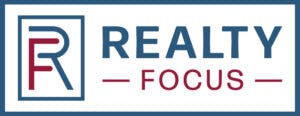Posted on
February 13, 2025
by
Jeff Johnson
Edmonton’s housing market is off to quite the start in 2025, with residential sales rising in January despite the typically slower winter season, according to the latest report from the Realtor’s Association of Edmonton. In January, 1,597 residential sales were recorded in the Greater Edmonton Area (GEA), marking a 12.1% increase from December 2024 and an 11.2% rise compared to January 2024.
New listings rose dramatically last month to 2,452, up 83.5% increase from December 2024 and a 12.9% gain from January last year. Despite the monthly growth, overall inventory remained lower year-over-year, down 18.2% compared to the previous year.
“When we announced our 2025 Housing Market Forecast just a few weeks ago, we did count on some unpredictability this year,” said Realtor’s Association of Edmonton board chair Darlene Reid.
“The first surprise of the year is seeing such a marked increase in newly listed properties coming onto the market in what is typically a slower month, and of course, many were snatched up right away. I’d love to say that trend will continue through the year, but we’ll have to wait and see.”
The average residential price reached $438,278, up 0.8% from December and 9.9% higher than January 2024. Detached homes averaged $561,282, a 4.2% increase from December and 16.2% higher annually.
According to the report, apartment condominium sales saw the most significant annual increase, jumping 36% from last year, while semi-detached sales surged 41.8% year over year.
Row/townhouse sales climbed 21.8% annually, and detached home sales, while making up the majority of transactions at 856 units, dipped 2.4% from the previous year but increased 3.9% month-over-month.
Semi-detached homes sold for an average of $420,844, up 3% month-over-month and 11.2% year-over-year, while row/townhouses averaged $311,866 — growing 6.6% from December and 15.8% from last year.
Apartment condominiums were the only category to see a monthly price decline, down 0.8% to $202,663, but remained 4.9% higher than January 2024.
The MLS Home Price Index composite benchmark for the GEA was $419,200, a 3.8% monthly increase and a 12% rise from January 2024.
Homes spent an average of 48 days on the market, up four days from December but 11 days faster than in January 2024.
Detached homes took 51 days to sell, seven days longer than the previous month, while semi-detached properties averaged 37 days, up four days from December.
Row/townhouses also sold at 37 days, down one day from December, while apartment condominiums remained unchanged at 57 days.



